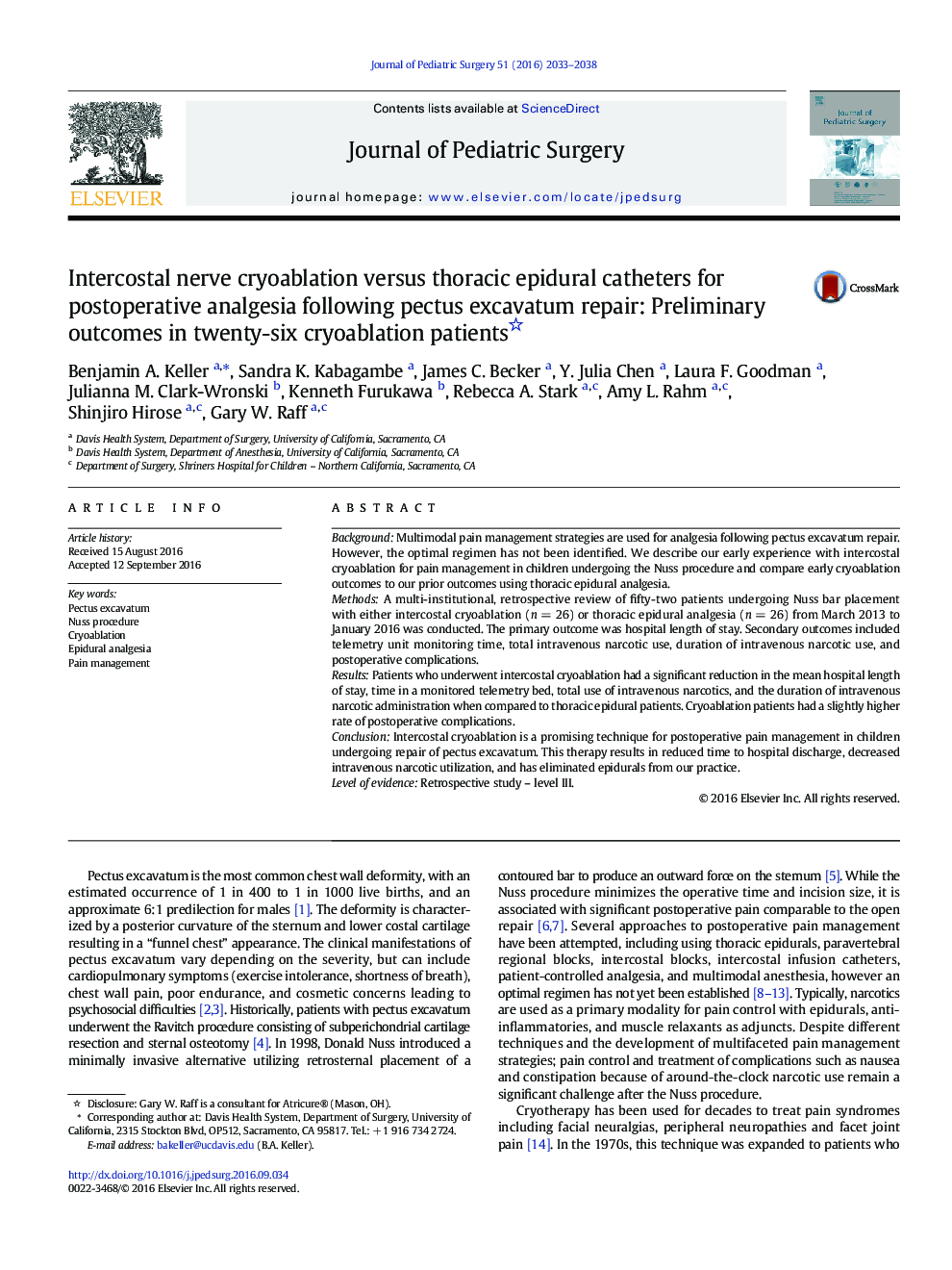| Article ID | Journal | Published Year | Pages | File Type |
|---|---|---|---|---|
| 5718336 | Journal of Pediatric Surgery | 2016 | 6 Pages |
BackgroundMultimodal pain management strategies are used for analgesia following pectus excavatum repair. However, the optimal regimen has not been identified. We describe our early experience with intercostal cryoablation for pain management in children undergoing the Nuss procedure and compare early cryoablation outcomes to our prior outcomes using thoracic epidural analgesia.MethodsA multi-institutional, retrospective review of fifty-two patients undergoing Nuss bar placement with either intercostal cryoablation (n = 26) or thoracic epidural analgesia (n = 26) from March 2013 to January 2016 was conducted. The primary outcome was hospital length of stay. Secondary outcomes included telemetry unit monitoring time, total intravenous narcotic use, duration of intravenous narcotic use, and postoperative complications.ResultsPatients who underwent intercostal cryoablation had a significant reduction in the mean hospital length of stay, time in a monitored telemetry bed, total use of intravenous narcotics, and the duration of intravenous narcotic administration when compared to thoracic epidural patients. Cryoablation patients had a slightly higher rate of postoperative complications.ConclusionIntercostal cryoablation is a promising technique for postoperative pain management in children undergoing repair of pectus excavatum. This therapy results in reduced time to hospital discharge, decreased intravenous narcotic utilization, and has eliminated epidurals from our practice.Level of evidenceRetrospective study - level III.
